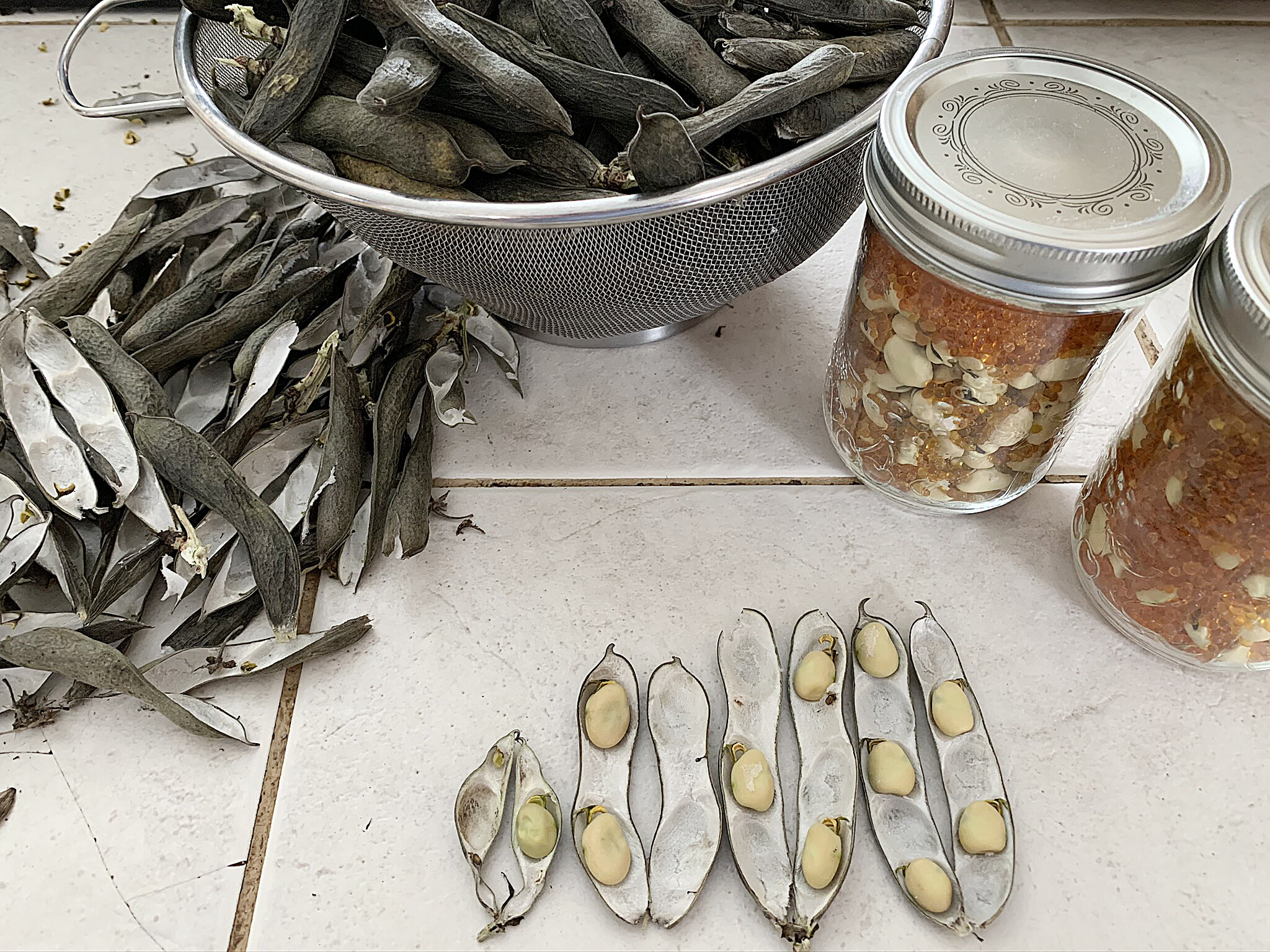SSE Citizen Scientist Spotlight: Meet Tiffany Traverse
/While taking a rest beside her raised-bed gardens, Tiffany Traverse, a first-time Citizen Science Corps participant, displays her soil-covered hands.
In 2016, Seed Savers Exchange launched its Citizen Science Corps initiative, providing SSE members the opportunity to help us steward our collection of more than 20,000 varieties through the ADAPT and RENEW programs. Since that time, members from around the country, indeed the world, have taken up the call to action to regenerate and document rare varieties. From cultivating small raised beds in urban gardens to working extensive homesteads in the boreal forest of northeastern British Columbia, our volunteers make up a diverse community that takes great pride in being a small (yet essential!) part of this thriving movement.
The stories of these passionate volunteers are as varied and interesting as those of the seeds that they grow. In celebration of Citizen Science Month, we are sharing three firsthand accounts written by 2019 Citizen Science Corps participants that shed light on what inspires them to step up to the plate to help SSE steward its collection for future generations. First up? Tiffany Traverse of British Columbia, Canada.
Tiffany Traverse
I am a mixed Secwépemc Indigenous and Swiss Italian heritage seed steward growing crops in northeastern British Columbia, Canada. I've been around farmers and foragers my entire life, having grown up on my traditional territory in the Columbia Valley in British Columbia. We Secwépemc are land and water protectors and traditionally a very nomadic people, traveling with the seasons and following migration routes of plants and animals. Roots are a staple food and medicine crop, so an aptitude for growing potatoes and carrots has always felt quite natural for me. Being immersed in the Seed Seva online mentorship program (by Rowen White of Sierra Seeds) has given me much inspiration to further research my ancestral foods and seeds and opened my eyes to how my people evolved and continue to thrive.
Now living in zone 2 with an approximate 90-day growing season, I'm focusing on adapting plants and seeds to our short seasons and changing climate. In addition to the work I do with Seed Savers Exchange, I just completed my second year of the CANOVI (Canadian Organic Vegetable Improvement) project, for which I conduct on-farm variety trials of orange storage carrots. The seeds have a way of finding their path to me, so under the guidance of Caroline Chartrand, Métis Seed Keeper, I am helping conduct a large grow-out of culturally significant Métis seeds that were nearing the edge of their viability. My hope is that these seeds can be returned to the Métis in Winnipeg, stronger than ever, and possibly ignite interest in traditional foods in the Métis community up north as well. I'm also very passionate about collaborating and sharing resources with other growers and seed enthusiasts in my advisory council role with the Community Seed Network, and look forward to continuing to engage with other seed lovers around the world.
I am a fairly new member of Seed Savers Exchange, having listed seeds for only the past two years on the Exchange, but I have been growing food and seeds for about five years on my own. This was my first year participating in the Citizen Science Corps, and I thoroughly enjoyed both programs (ADAPT and RENEW)!
This past season, I grew snow peas for the ADAPT program, which found me trialing three named varieties: 'Swenson Swedish,' 'Chinese Snow,' and, my favorite, 'Agio.' Of the three, 'Agio' was a solid performer that I would choose to grow again. It boasted plenty of sweet, snappy pods on a very short, two-foot vine, making it an ideal variety for home gardeners with limited space.
Tiffany Traverse grew these 'Bergeron' fava beans (or "monkey beans") for the Citizen Science Corps RENEW program.
For the RENEW program, I grew out 'Bergeron' fava beans-or "monkey beans," as the original family called them. I was lucky enough to connect with Seed Savers Exchange's seed donor, Leigh Hurley, to video chat about the history of 'Bergeron' and how they came into her care. These beans have been grown in northeastern Vermont since at least the 1950s, and have a history of being grown in Québec, Canada, by Annette Bergeron prior to that. The beans were eaten as any typical fava would be, and were also roasted, ground, and brewed as a coffee substitute during tough times. Leigh told me about the Bergeron sisters, who were actually a very competitive pair-they used to see who could boast the best crops year after year. We chuckled about my 66-day growing season this year (after our frost on August 10), and she lamented how her favas were fodder for the deer encroaching on her garden in Vermont because of urban sprawl.
The 'Bergeron' favas really enjoyed our cooler weather up north, and set quite a few flowers on the approximately 90 plants that reached maturity. Because of the impending early frost, experts in the 'Heirloom Bean Addicts Anonymous' Facebook group suggested the plants be brought inside to finish maturing in our atrium. So that's what I did, and it worked! I pulled and hung each of the plants, roots and all, from the rafters, and they produced a really nice hefty crop of seed. I'm so pleased to be a small part of the history of these seeds, and hope to pass along these stories to the next growers.
This is the first of a three-part series celebrating Seed Savers Exchange’s citizen scientists. Click here for more information on our Citizen Science Corps program.















